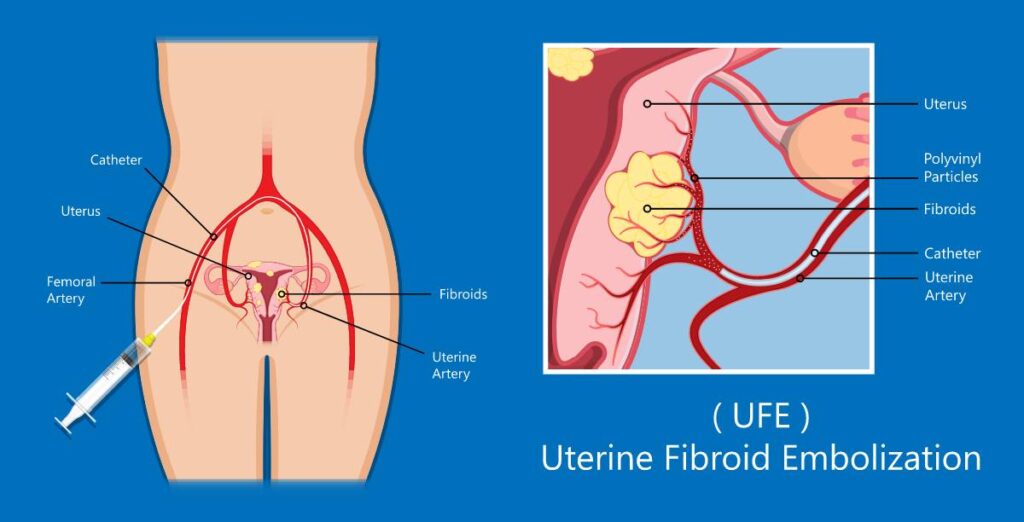Uterine Fibroid Embolization
Home » Uterine Fibroid Embolization
Uterine Fibroid Embolization by Atlanta Fibroid Clinic
What is Uterine Fibroid Embolization?
Uterine Fibroid Embolization (UFE) is a minimally invasive, non-surgical procedure that blocks blood flow to uterine fibroids, which are noncancerous tumors that grow within the uterus. The procedure delivers tiny particles to the uterus through the arteries that supply blood to the fibroids.
Uterine fibroids thrive and grow because of an uninterrupted supply of blood. With their food supply gone, the fibroids cannot continue to grow and begin to wilt and shrink.
The procedure is safe and painless, with a swift recovery time and a satisfaction rate of over 90%.
UFE is typically an outpatient procedure with minimal discomfort and a quick recovery time that usually lasts no more than a week.
UFE is the leading alternative to hysterectomy.

How is the UFE procedure performed?
Dr. Patel performs the procedure while you’re under sedation and local anesthesia.
A 5 mm incision is made either in the groin or in the wrist after which a thin tube is inserted into the blood vessel (that is supplying blood to the fibroid). Using X-Ray imaging, minute, gel-like particles are introduced into the tube where they move through to the artery and block it from supplying blood to the fibroid. Once the supply is blocked, your fibroid starts to shrink and die.
The procedure is repeated for each fibroid that requires treatment.
Is there more than one approach for UFE?
- TRANSRADIAL (through your radial artery within your wrist)
- TRANSFEMORAL (through your femoral artery located near your groin)

What happens post procedure?
You can return home a few hours after the procedure with a prescription for pain medication if required. Dr. Patel conducts a follow-up call the day after you return home to ensure you are recovering well.
Rest is recommended for at least 24 hours following the procedure, with recovery expected within a week’s time.
What are the advantages of UFE?
- Non-invasive, outpatient treatment
- Preservation of your uterus and fertility
- Return to regular, normal monthly menstrual flow
- Reduced abdominal pain, pelvic pressure, and bloating
- Faster recovery time than other surgical procedures


